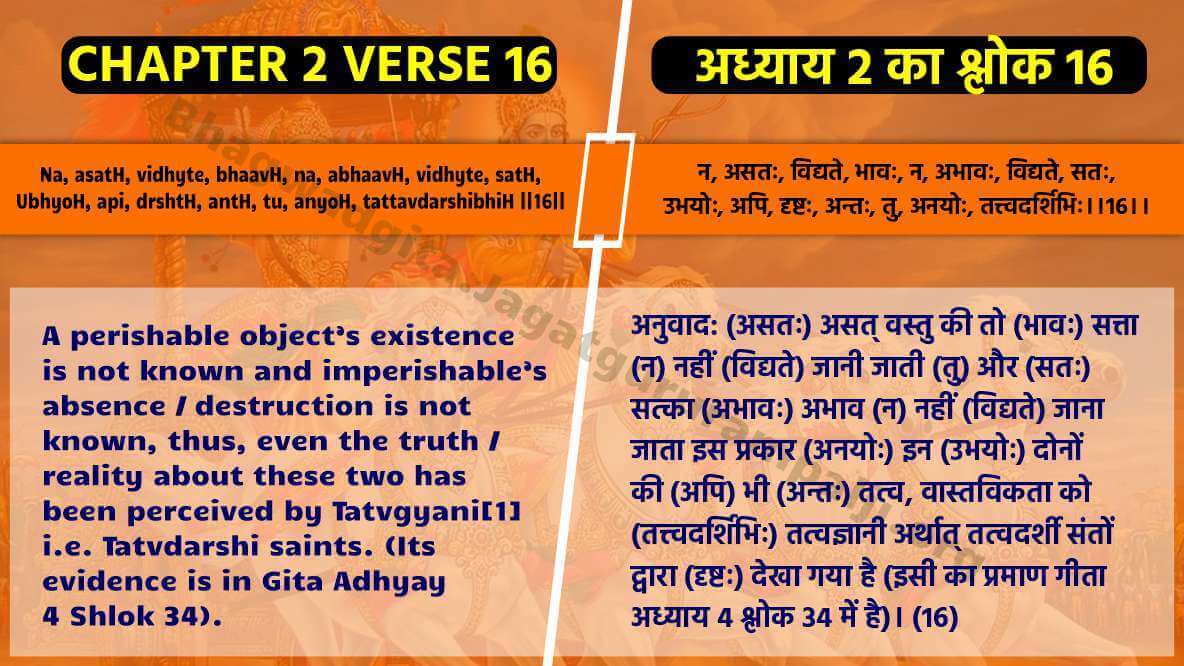
Na, asatH, vidhyte, bhaavH, na, abhaavH, vidhyte, satH,
UbhyoH, api, drshtH, antH, tu, anyoH, tattavdarshibhiH ||16||
Translation: (AsatH) perishable object’s (bhaavH) existence (na) not (vidhyte) is known (tu) and (satH) imperishable’s (abhaavH) absence/ non-existence / destruction (na) not (vidhyte) is known, thus (anyoH) these (ubhyoH) of two (api) also (antH) truth, reality (tattavdarshibhiH) Tatvgyani/ knower of truth i.e. by Tatvdarshi saints (drshtH) is seen/perceived. (16)
Translation
A perishable object’s existence is not known and imperishable’s absence / destruction is not known, thus, even the truth / reality about these two has been perceived by Tatvgyani[1] i.e. Tatvdarshi saints. (Its evidence is in Gita Adhyay 4 Shlok 34).
न, असतः, विद्यते, भावः, न, अभावः, विद्यते, सतः,
उभयोः, अपि, दृष्टः, अन्तः, तु, अनयोः, तत्त्वदर्शिभिः।।16।।
अनुवाद: (असतः) असत् वस्तु की तो (भावः) सत्ता (न) नहीं (विद्यते) जानी जाती (तु) और (सतः) सत्का (अभावः) अभाव (न) नहीं (विद्यते) जाना जाता इस प्रकार (अनयोः) इन (उभयोः) दोनों की (अपि) भी (अन्तः) तत्व, वास्तविकता को (तत्त्वदर्शिभिः) तत्वज्ञानी अर्थात् तत्वदर्शी संतों द्वारा (दृष्टः) देखा गया है (इसी का प्रमाण गीता अध्याय 4 श्लोक 34 में है)। (16)
[1] God realised saint who has complete knowledge of all the holy scriptures of all the religions
